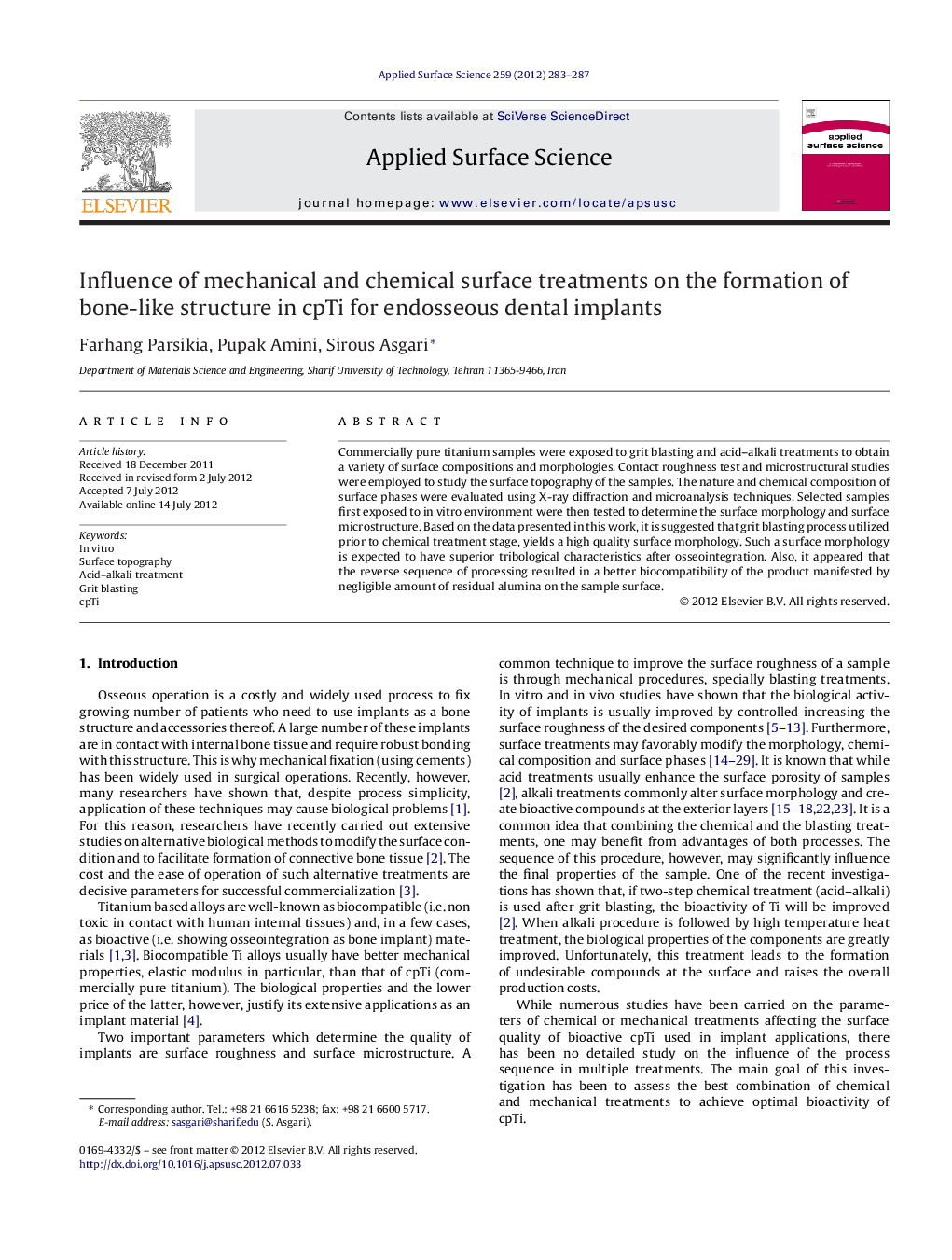| Article ID | Journal | Published Year | Pages | File Type |
|---|---|---|---|---|
| 5361459 | Applied Surface Science | 2012 | 5 Pages |
Commercially pure titanium samples were exposed to grit blasting and acid-alkali treatments to obtain a variety of surface compositions and morphologies. Contact roughness test and microstructural studies were employed to study the surface topography of the samples. The nature and chemical composition of surface phases were evaluated using X-ray diffraction and microanalysis techniques. Selected samples first exposed to in vitro environment were then tested to determine the surface morphology and surface microstructure. Based on the data presented in this work, it is suggested that grit blasting process utilized prior to chemical treatment stage, yields a high quality surface morphology. Such a surface morphology is expected to have superior tribological characteristics after osseointegration. Also, it appeared that the reverse sequence of processing resulted in a better biocompatibility of the product manifested by negligible amount of residual alumina on the sample surface.
⺠Acid-alkali process after grit blasting showed optimized surface morphology. ⺠The reverse sequence yields inferior bioactivity and improved biocompatibility. ⺠Surface morphology was most uniform after a final grit blasting stage.
